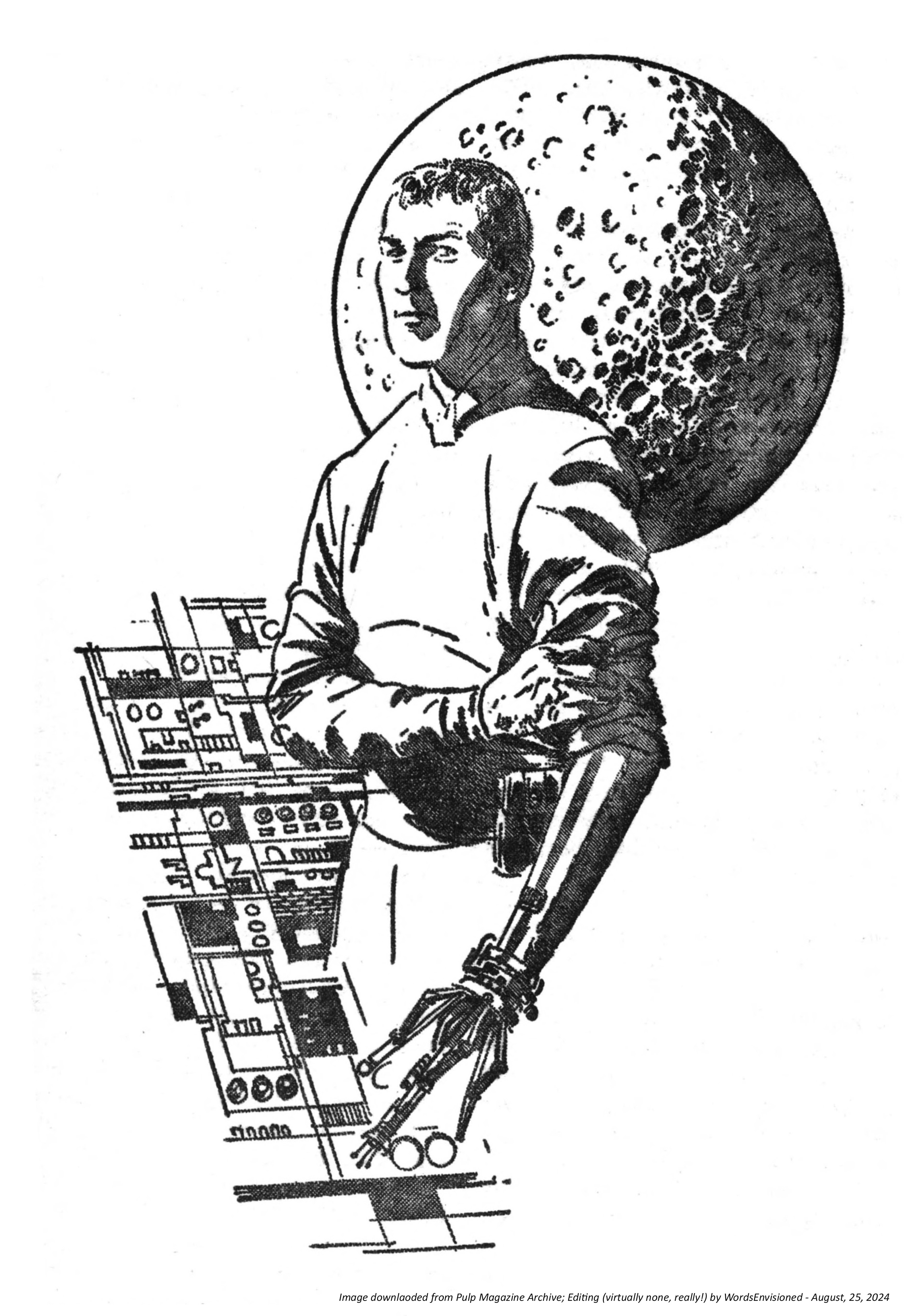While Robert Heinlein was absolutely central to the development and prominence of science fiction as a literary genre and cultural phenomenon – and certainly a more than a skilled writer, as such – he’s never been among my favorite authors in the field, specifically in terms of the themes and ideologies that were the foundation of his latter works. Regardless, the literature he produced was highly significant, the impact of some of his stories extending into realms political and philosophical. Such as, “The Moon is a Harsh Mistress”, which was featured in Worlds of If from late 1965 through early 1966. Gray morrow did both the cover art and interior illustrations.
I’m a general specialist.
Could relieve a cook and keep orders coming or field-repair your suit
and get you back to airlock still breathing.
Machines like me and I have something specialists don’t have:
my left arm.
You see, from elbow down I don’t have one.
So I have a dozen left arms,
each specialized,
plus one that feels and looks like flesh.
With proper left arm (number-three) and stereo loupe spectacles
I could make ultramicrominiature repairs
that would save unhooking something and sending it Earthside to factory
– for number-three has micromanipulators as fine as those used by neurosurgeons. (page 12)

Illustration by Gray Morrow
(…page 11…)

And otherwise?
A Harsh Mistress, The Moon is, at…




